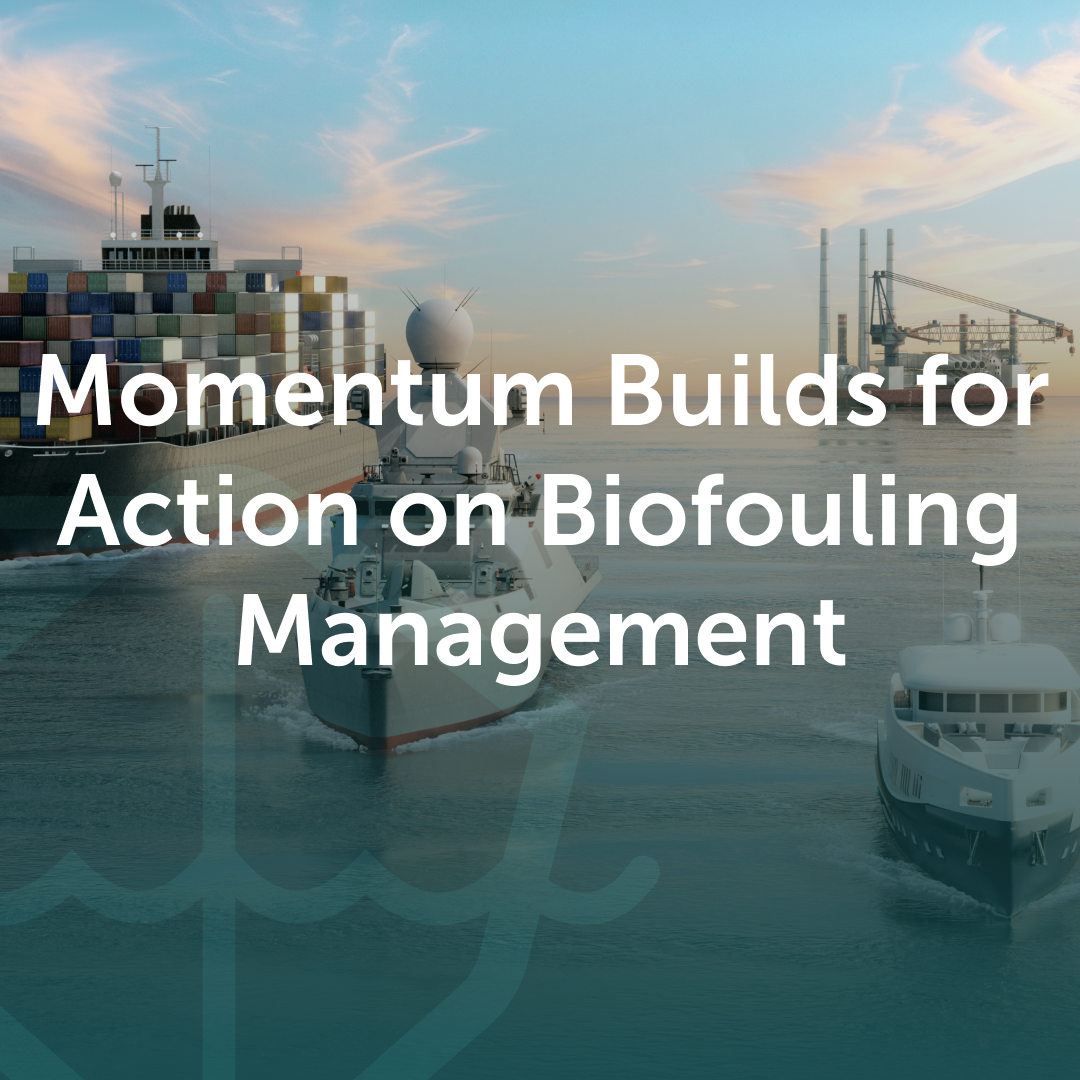Biofouling Management: The Overlooked Emissions Solution the Industry Can’t Afford to Ignore
This blog recaps key takeaways from MEPC 83, where biofouling management emerged as a critical lever for emissions reduction and regulatory alignment.

Momentum Builds for Action on Biofouling Management
As maritime decarbonisation efforts accelerate and the pressure to meet environmental targets intensifies, one of the most impactful and immediately available solutions remains overlooked and underutilised. That solution is biofouling management.
However, at the 83rd meeting of the International Maritime Organization’s Marine Environment Protection Committee (MEPC 83) in April, we have started to see a shift in the conversation surrounding biofouling management. Whilst most of the headlines around MEPC 83 have focused on the landmark deal on GHG emissions reduction, biofouling was also a key agenda item. The session concluded with an agreement on the development of a legally binding convention on the control and management of ships’ biofouling. This pivotal decision marks a turning point, not just in invasive species control, but in recognising biofouling as a core contributor to greenhouse gas emissions and hull inefficiency.
This is a hugely welcomed decision, although the roadmap to implementation is a long one. A binding convention may not materialise until 2029 or beyond, followed by a ratification period before entry into force, so it will be some years before this takes full effect. In the meantime, ship owners and operators have an important choice to make: wait for regulation, or act now to take advantage of the efficiency gains that biofouling management can deliver today.
Why Biofouling Matters More Than Ever Before
Unmanaged hull fouling can increase fuel consumption by 20 to 40%. That’s not just an operational inefficiency; it’s a silent emissions driver. Yet, unlike carbon intensity and energy efficiency measures, biofouling has so far lacked the regulatory urgency it deserves.
By contrast, local and national regional frameworks, most notably in Australia and New Zealand, and also California, have implemented tough local biofouling rules to combat invasive aquatic species. However, without a global framework, shipowners face a patchwork of regulations, which can lead to inconsistent enforcement, unnecessary complexity for crews, and limited access to in-water cleaning solutions.
The result is continued inertia, despite the availability of proven, cost-effective technologies that could slash GHG emissions, improve CII and EEXI ratings, and protect marine ecosystems all at once.
The Business Case for Clean Hulls
Effective biofouling control is much more than a compliance strategy; it significantly enhances operational efficiency of the vessel. Clean hulls reduce drag, reduce fuel bills, and extend drydock intervals, improving both bottom lines and environmental footprints.
It’s time to reframe the narrative. Biofouling isn’t just a ship maintenance issue. It’s a sustainability driver, a compliance tool, and a competitive differentiator. Better yet, it’s a proven solution that can be implemented today.
At Evac Group, we believe it’s essential to stop thinking of biofouling in isolation. It should instead be treated as an integral part of every shipowner’s sustainability strategy, protecting the environment above and below the waterline. With our comprehensive solutions—from hull protection systems to waste and water management—we are uniquely positioned to help shipowners integrate biofouling management into their overall approach to environmental management, including GHG emissions reduction.
Of course, we understand the caution of many shipowners. The slow uptake of ballast water treatment regulations and the lack of technology readiness and clarity left many feeling stranded. But this time, the stakes are higher, the timeline is shorter. What’s more, the technologies behind the latest biofouling solutions are tried, tested and proven.
MEPC 83: A Turning Point for Industry Awareness
MEPC 83 is an opportunity to shift perceptions and raise awareness in order to position biofouling management as an important part of shipping’s decarbonisation toolkit, to fulfil the IMO’s decarbonisation ambitions. With global climate deadlines looming, the case for action has never been clearer.
Looking Forward
The development on the biofouling convention agreed at MEPC 83 is due to formally begin in 2026, but the work can start today on bringing the industry together, regulators, technology companies, shipping owners and others, to share insights and ideas on the right approach to developing a framework that will underpin a unified global standard to deliver the desired results.
Just as importantly, with a mindset shift from reactive compliance to proactive environmental stewardship, shipping companies can embrace the full benefits of biofouling management now.
